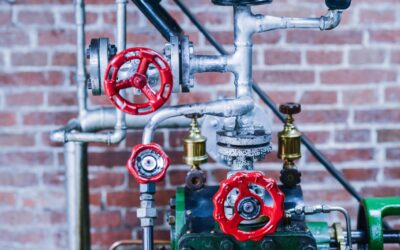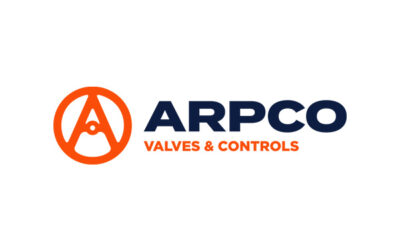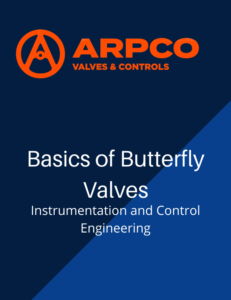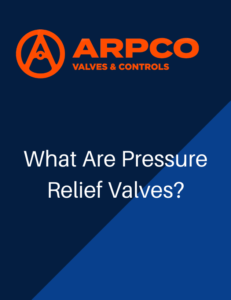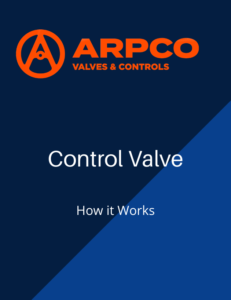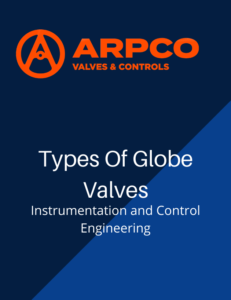Knowledge Base
By exploring our knowledge base, you can discover valuable information about oil and gas operations, safety practices, and environmental sustainability. Our articles and blogs cover a range of topics, from the basics of wellhead equipment to the latest advancements in control engineering. So why not take a deep dive into the world of oil and gas and expand your knowledge today?
Blogs
How Do Safety Valves Work? Everything you need to know.
Discover the essentials of safety valves in preventing industrial accidents within the oil, gas, and chemical industries.
What Are Pressure Safety Valves? Everything you need to know to stay safe and compliant.
Everything you need to know about pressure safety valves, from their critical role in oil and gas operations to Arpco Valves & Controls’ commitment to safety.
Embracing a Sustainable Future: The Path to Zero Emissions and Environmental Consciousness
In an era where climate change and environmental degradation are at the forefront of global concerns, the importance of reducing our carbon footprint and striving for zero emissions cannot be overstated. As a leader in the valve and control industry, Arpco Valves...
Understanding Pressure Relief Valves: Safeguarding Your System
In any industrial setting, the safe operation of equipment and systems is of paramount importance. Among the various components that ensure safe and reliable operation, pressure relief valves play a crucial role. These valves are designed to protect equipment,...
Installation, Inspection, Maintenance, and Repair with Arpco Valves & Controls.
Valve Maintenance and Repair Valves play a crucial role in the oil and gas industry. They are used to control the flow of oil and gas, ensuring that they are transported safely and efficiently from the point of extraction to the point of use. As such, it is important...
Delivering Production with Zero Emissions: Introducing the ZEUS Compressor Package
The need for eco-friendly solutions to reduce emissions from oil & gas production has never been greater. One such solution is the ZEUS Compressor Package, a revolutionary new system that helps reduce emissions from oil & gas production. This blog post will...
Repair Don’t Replace Your Equipment With Arpco Valves & Controls
Repair Don’t Replace Your Equipment Maintaining equipment in the oil and gas industry is crucial for ensuring the safety and efficiency of operations. Proper maintenance can help extend the lifespan of equipment, reduce the risk of accidents, and improve overall...
Success Stories
ARPCO Valves And Chevron
The Problem: Chevron called us onsite for valve repair and maintenance at a pace that would have resulted in somewhere around 240 yearly callouts. The estimated value of those callouts was somewhere near the $250,000 range. Solution: Once the Arpco team got involved...
ARPCO Valves And Riviera
The Problem: Riviera was spending too much money on maintenance of the wells but obviously needed to keep their wells maintained properly for efficiency and safety. Solution: The Arpco team set up a maintenance program and they were so ecstatic, we received a call...
Articles
How To Choose A Control Valve
Definition Of A Control Valve
A control valve is a final control element used to regulate the flow of liquid through a channel. They can throttle flow over a range of fully open to fully closed. A control valve is installed perpendicular to the flow, and a controller can adjust the valve opening at any stage between ON & OFF.
Conditions Affecting The Valve Selection
The control valve is important in the process operation. Not only are the specifications of the valve itself important, but it is also necessary to sufficiently consider other matters related to the control valve in order for it to function as required. The following are the main points to keep in mind when specifying a control valve:
1. Process Target
It is important to understand well the process including the control valve. One should sufficiently understand the start-up and shut-down of the process itself, including proper conduct in an emergency situation.
2. Purpose Of Use
The control valve is used for different purposes, Control valves are used to control the level in a tank, there are also valves that control a pressure drop from a high-pressure system to a low-pressure system.
There are control valves that control the cut-off and release of fluids, mix two fluids, separate the flow into two directions, or exchange fluids. Therefore, the most appropriate control valve is chosen after determining the purposes of a particular valve.
3. Response Time
The time taken to respond to the control valve after changing the manipulation signal is the response time of the control valve. The control valve experiences a period of dead time before the plug stem can overcome friction from the packing and begin to move. There is also a period of operating time needed to move the required distance. It is necessary to consider the effect of these factors on the controllability and safety of the entire system. For good control valve, the response time should be less.
4. Specific Characteristics Of The Process:
Determine in advance the presence or absence of self-equilibrium, the range of variation in the required flow rate, the speed of response, etc.
5. Fluid Conditions
The various conditions of the fluid can be obtained from the process data sheet, and these become the basic conditions for the selection of the control valve. The following are the main conditions that will be used:
- Name of fluid: Components, composition
- Flow rate: Pressure (at both the inlet and outlet ports of the valve) Temperature
- Viscosity: Density (specific gravity, molecular weight)
- Vapour pressure: The degree of superheating (water vapour)
6. Fluidity, Special Characteristics
One should determine the presence of possible dangers regarding the nature of the fluid, corrosiveness, or slurry.
7. Rangeability
In the case where one control valve cannot provide the necessary rangeability, consideration of the use of two or more valves becomes necessary.
8. Valve Differential Pressure
The rate of control valve pressure loss in a piping system is a complicated problem. As the rate of the valve’s differential pressure decreases relative to the overall pressure loss of the entire system, the installed flow characteristics shift away from the inherent flow characteristics. Although it is impossible to generalize, a value for PR between 0.3 and 0.5 is usually chosen.
9. Shut-Off Pressure
The highest value of the differential pressure at the control valve shut-off time is important data to be used in the choice of the actuator and in ensuring a sufficiently strong design for each part of the control valve.
Designs in which the intake pressure is set equal to the maximum shut-off pressure are numerous, but this method might result in over-specification of the valves. Thus it is necessary to consider actual use conditions when determining the shut-off pressure.
10. Valve-Seat Leakage
It should be clearly determined the quantity of seat leakage can be tolerated at the time of valve shut-off. It is also necessary to know the frequency with which the valve shut-off condition occurs.
11. Valve Operation:
There are mainly two types of operation for control valve:
- Operation according to the valve input signal: The opening and closing direction of the valve is adjusted according to whether the input signal to the valve increases or decreases, but the operation is not necessarily the same as the fail-safe operation. When the valve closes as a result of the increased input, this is called direct action. When the valve opens as a result of the increase of the input signal, this is called the reverse action.
- Fail-safe operation: The movement of valve operation is in a safe direction of the process in case the input signal and the power supply is lost. The operation is classified as “air failure close,” “open,” or “lock.”
12. Explosion-Proofing
Based on the location where the valve is installed the control valve needed sufficient explosion-proof rating, both the electrical used with the valve should have the explosion proof.
13. Power Supply
Pneumatic power supply to the valve actuation should be sufficient and it is important to provide clean air with water, oil, and dust removed in order for parts such as the actuator and positioner to function without failure. At the same time, one must determine the actuative pressure and capacity so as to secure enough actuative power.
14. Piping Specifications
Determine the specifications of the piping in which the control valve is installed. The important specifications include the diameter of the pipe, the piping standards, the quality of the material, the type of connection to the piping, and so on.
Pros And Cons Of Hydraulic Actuation
Hydraulic Actuation
When size and weight requirements no longer make pneumatic actuators economical, the choice shifts to hydraulic actuators. Other specific factors can also drive the choice to hydraulics, usually as a result of the specific characteristics of hydraulic fluids.
Introduction
High-pressure hydraulic fluid is complex to manage, creating safety and environmental risks. Personnel with higher skill levels are required when dealing with high-pressure hydraulic instrumentation.
Hydraulic control instrumentation is significantly more expensive, and is available from a much smaller supplier base.
Like pneumatics, hydraulic actuators face increasingly stringent regulation. The mineral oil used in hydraulic systems adds an additional set of environmental limitations relating to handling, disposal, pollution risks and other factors.
Recommended Applications
Offshore installations and upstream applications are the primary users of hydraulic actuators. In these environments, the space- and weight-saving benefits of the small cylinders are significant enough to offset the higher costs and risks associated with the use of high-pressure hydraulic fluids.
Onshore applications will primarily require hydraulic actuation only when extremely high torques or operating speeds are required by a specific application.
While hydraulic cylinders must be stronger and thicker to contain higher pressures, they have much smaller dimensions. This size benefit is the primary reason to use hydraulic actuation.
Unlike pneumatics, the high-pressure mineral oil that drives hydraulic actuators can’t be compressed. For this reason, hydraulic actuators are more precise than pneumatics, making them preferred for use in modulating or positioning applications where a high degree of accuracy is required.
In corrosive atmospheres, hydraulic fluids offer a higher degree of corrosion protection in the actuator cylinder than air or gas.
Hydraulic systems can operate very large actuators at extremely high speeds.
Pneumatic Actuators
Pneumatic actuators are simple mechanical devices, able to incorporate a mechanical action or valve stroke by storing energy in a spring.
A key advantage of this design is that a pneumatic actuator can always reach a predefined safe condition, even after the loss of its primary power supply (compressed air or electricity to the control components). This is the most important differentiator between pneumatic and electric actuators today. It’s also why nearly 90% of on/off piston-type actuators are spring-return, as opposed to double-acting.
Pneumatics become the actuator of choice in applications where electric actuators don’t meet process requirements for fail-safe action, high torques or very high operating speed.
Pros
- Pneumatic systems run on compressed air, a safe fluid medium (electric power is necessary to operate a compressor).
- Pneumatic control equipment is widely available and relatively inexpensive.
- Pneumatic control systems can be configured to achieve a vast range of functions. Heavy-duty pneumatic actuators can be used for modulating applications (though not with a high degree of positioning accuracy or hysteresis).
- Pneumatic actuators allow very high-speed operation.
Because of their ability to store energy in a spring, pneumatic actuators can always reach a predefined safe condition (fail-open or fail-closed), even after the loss of its primary power supply.
Cons
- Pneumatic actuators are typically more costly than equivalent torque electric actuators on all but the largest valves, especially when factoring in control components such as solenoid valves, air filter regulators and other pneumatic instrumentation.
- At present, pneumatic actuators are not easily integrated into electronic data management systems.
- As valve size increases, pneumatic actuator size also increases. Pneumatic cylinders can become large with very high air volumes, leading to more energy costs for compressed air, large footprints, and high weight impacting on piping construction support. This may be a concern for upstream offshore applications, where size and weight compactness is often an important requirement.
- The regulatory environment for pneumatics is changing much faster than the actuators themselves. Proven existing systems increasingly require approval from third-party validating agencies, while safety and integrity compliance standards are regularly increased. As a result, pneumatic systems can require periodic upgrades to meet new standards of materials usage and performance guarantees.
Recommended Applications
Pneumatic actuators are widely used in onshore oil and gas applications. They also account for about 40% of offshore applications, typically on small- to medium-sized valves where their size and weight penalties have less impact on construction costs and installation footprints.
